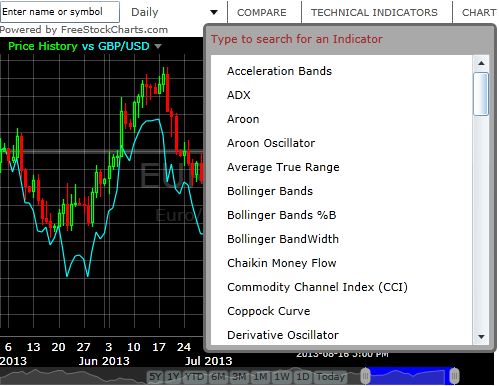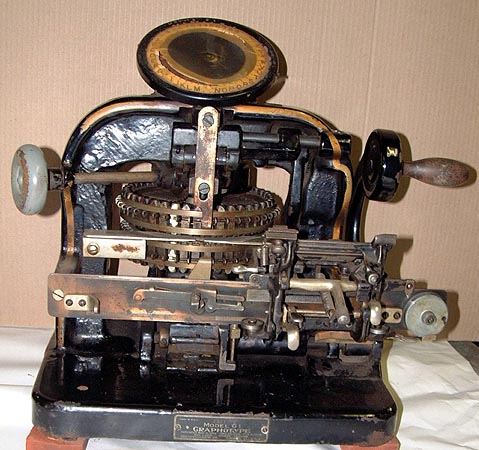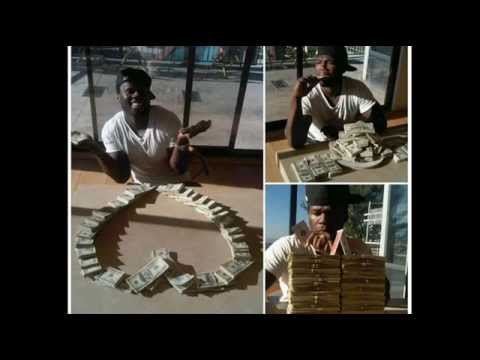Contents:
Anderson is CPA, doctor of accounting, and an accounting and finance professor who has been working in the accounting and finance industries for more than 20 years. Her expertise covers a wide range of accounting, corporate finance, taxes, lending, and personal finance areas. There are numerous ways to build a hedge which eliminates the need for a fixed stop loss. Trading without a stop loss is possible because risk is minimized in other ways. This is mostly nonsense especially in liquid markets with thick order books. Prior successes and past performance with regards to earnings and income are not an indication of potential future success or performance.

Warning: Here’s How Stop-Loss Orders Can Be Dangerous… – Nasdaq
Warning: Here’s How Stop-Loss Orders Can Be Dangerous….
Posted: Fri, 18 Oct 2019 07:00:00 GMT [source]
As an example, if you are https://forexanalytics.info/ Apple at $500 and place a buy stop limit order at $525, then your position will be liquidated at the set price of $525. For example, a trader who buys shares of stock at $25 per share might enter a stop-loss order to sell his shares, closing out the trade, at $20 per share. It effectively limits his risk on the investment to a maximum loss of $5 per share. If the stock price falls to $20 per share, the order will automatically be executed, closing out the trade. Stop-loss orders can be especially helpful in the event of a sudden and substantial price movement against a trader’s position. Stop-loss orders are traditionally thought of as a way to prevent losses.
Nothing herein should be considered personalized investment advice. The advice we provide is published generally, is not personal to you and does not take account of your personal circumstances. You should not base investment decisions solely on this document. If you don’t have a profitable options strategy to follow yet, give Quick Hit Profits a shot. We’ve created a one-of-a-kind opportunity to get started with my No. 1 research service just for Weekly Options Corner readers. Because even though your losses are limited to the capital you spent on the trade, your gains can run much, much higher.
Time Stop
Had we preserved capital when things were heading south, we would have never been handed that triple-digit opportunity. A gap is the change from the close price to the next morning’s open price. These are how you can set your stop-loss order in forex. Now the question is, which one of the mentioned methods of placing SL is the best? You can choose one which is the most logical and straightforward to you. You can determine stops based on what the charts are saying.

Feeder cattle don’t trade well either but are included to represent the meats sector the market. The position will be closed and reversed to a short trade when prices fall to a new 20-day low. It’s a simple strategy designed to catch big trends and is always in the market, but suffers a lot of losses. A stop loss order is triggered when prices trade at the selected price. If it is entered as a market order, the trade will be executed as quickly as possible. It may be at the selected price, or more likely slightly below that price.
Some educators will teach that a support or resistance level is more reliable if it’s touched multiple times, on the same side. So set your stop loss at a level that gives the trade room to move and will show you that you were wrong about your trade idea. To get more details on where to set your stop loss, read my post on how to figure out the ideal place to set your stops. If you are using a super dodgy unregulated broker from a suspicious country, then you might see some abnormal price movements. Let’s first take a look at why brokers don’t hunt stop losses. Some traders might love the adrenaline rush of their mobile phone constantly beeping with fresh alerts, but I hate it.
They are often considered a means of risk management and some firms even require their traders to use them. The Charles Schwab Corporation provides a full range of brokerage, banking and financial advisory services through its operating subsidiaries. Its broker-dealer subsidiary, Charles Schwab & Co., Inc. , offers investment services and products, including Schwab brokerage accounts. Its banking subsidiary, Charles Schwab Bank, SSB , provides deposit and lending services and products. Access to Electronic Services may be limited or unavailable during periods of peak demand, market volatility, systems upgrade, maintenance, or for other reasons.
A stop-https://day-trading.info/ order is a conditional trade over a set time frame that combines features of stop with those of a limit order and is used to mitigate risk. Another restriction with the stop-loss order is that many brokers do not allow you to place a stop order on certain securities like OTC Bulletin Board stocks or penny stocks. Since stops are inactive until the stop can be converted to a market order, the stop can be “blown through” when the instrument gaps. Your stop order will be filled at the prevailing post-gap price.
Find all the people who aren’t investing and make it easy. Robinhood figured out how to take it one dangerous step further. For newbies, I’ve heard it called death by a thousand papercuts. Even if you study, learn my patterns, and play by the rules, this one mistake could cost you. Over time, you could churn and burn your account, never gaining traction. Investguiding is a website that writes about many topics of interest to you, a blog that shares knowledge and insights useful to everyone in many fields.
Then, after the https://forexhistory.info/ of trading for the day, catastrophic news about the company comes out. Stop-loss orders are orders with instructions to close out a position by buying or selling a security at the market when it reaches a certain price known as the stop price. I prefer waiting for two closes below the level I’m looking for before exiting a trade on a stop loss. It allows time for the market to recover some of the losses and the extra day acts as confirmation that the trade is truly a loser.
Buy Stop Limit Order
They are allowed to bid or ask whatever their price they choose, so might try to widen their spreads and move the price up or down to flush out any stop orders. This would be easier for them to do in an illiquid stock rather than a liquid one . I am not sure this is inherently wrong, though there are rules against market manipulation. The market maker has to be able to make money somehow .
Seek the services of a competent professional person before investing or trading with money. A broker who places a market order for a stock is giving instructions to buy the shares at whatever the current price is. This can be a lucrative order for an unscrupulous market maker. In this case, the trick works again because the market maker fools the broker into selling the shares at $10, precisely the price the market maker wanted. Incidentally, the same trick can be used in reverse on the sell side of the equation.
Why 2020 Is a Perfect Storm for Retail Brokers
In fact, they make more commissions if you hang around. So there’s no motivation for them to take out your stops and blow out your account. If you are also a designated market maker in this security, you need to continue to adhere to exchange rules around providing public two-sided quotes, fair executions, etc. In the absence of liquidity, the market maker makes the market and he is the bid and the ask price. Anyone who comes in with an order with price movement then becomes the market on that side.

We execute a trade with the bullish engulfing confirmation candle. You can use support, resistance, trendline, channel, supply and demand zone as price barrier to place your stop-loss order. Setting stops beyond these valid levels of support and resistance is reasonable. Because if the market breaks those areas, the trade might go against you. Your allowable risk per trade is 2% of your account. Then you should calculate your position size with the amount of risking $200 for each transaction.
The first day of the month effect
Sometimes brokers sell this information to high-frequency traders. The trigger price is the price level where you want your stop loss to be executed. It is also called the stop-loss price, usually calculated as the percentage of your buying/selling price. A stop-loss order means that you give instructions via your trading platform that the system should automatically sell your asset when the price drops to or below a pre-specified level. At short positions , the stop-loss is triggered when the price increases at a pre-specified level. Simply put, a Trailing Take-Profit allows a trader to set their Trailing Stop-Loss to trigger only after reaching a certain profit.
The biggest problem with stop losses is that you have given up control of your sell order to the computer. Investopedia requires writers to use primary sources to support their work. These include white papers, government data, original reporting, and interviews with industry experts. We also reference original research from other reputable publishers where appropriate. You can learn more about the standards we follow in producing accurate, unbiased content in oureditorial policy. Working for you are the time-and-date stamps on the physical tickets.
Traders who have very large trade sizes will benefit from hiding their pending orders. If their trades are on the broker’s books, other large traders can temporarily move the market to hit their orders or ride the order flow. If you have a trading strategy that works really well and you don’t want other traders to reverse engineer it, then you might benefit from concealing your orders.
Prevent Intentional Slippage
As Stop Orders are not actually sent to the market, they cannot be seen by it until the trigger is reached and a «real» Market Order or «Limit Order» is created. PLEASE, NOTE that here, «Stock Exchange» doesn’t indicate the exchanges that we use to trade and to which we deposit our funds to use for trading, but, instead, indicates the «bourse». A matching engine uses the book to determine which orders can be fully or partially executed. If you mean in the bid/ask order list then no – only when the limit order is created. It’s obviously in the broker’s order system, though. For a vanilla stop order, a market order will be placed and will be filled using the highest active bid.
Though your broker has a fiduciary obligation to get you the best execution reasonably available on your market order, there is little transparency to this system. Trust me – in my fifteen years as an options broker in Chicago, I have seen some horrendous fills on market orders in options markets. A market order tells markets makers that you’re willing to buy/sell your option for whatever price they are willing to give you. When setting a stop-loss , you might use a market order. That would guarantee an exit from the losing trade but not necessarily at the desired price.
- A limit order is used to buy or sell a security at a pre-determined price and will not execute unless the security’s price meets those qualifications.
- Generally, for every expiration cycle, you go out, the less liquid the options will be.
- At the end of the day, or the end of the week, while checking open positions, if the trade has lost more than a certain amount, it should be closed at the next open.
- Market Makers want to minimize their transaction costs by providing bids or offers at prices just below those of other Market Makers.
- Brokers generally simulate these orders by subscribing to the market data feed, and having their order routing system send the order when the stop price was reached.
For example, if a trader places an order with 2% slippage tolerance to buy $100 worth of bitcoin, then that order could actually cost as much as $102. If the transaction would cost more than $102, then the order wouldn’t execute. A buy stop loss limit order is an order to buy a specific number of shares at a limit price. The buy stop limit order is used to close short positions above your entry price.
Stop-Limit Order in Options Trading Explained
A Market Maker is essentially an electronic trader that simultaneously offers to buy and sell stock at certain prices. These traders are what facilitate liquidity in securities markets by always buying from sellers and selling to buyers. Markets depend on these dealers because they make money when the stock goes up or down. The main disadvantage is that a short-term fluctuation in a stock’s price could activate the stop price. The key is picking a stop-loss percentage that allows a stock to fluctuate day-to-day, while also preventing as much downside risk as possible.
It keeps you out of that trade where your money is captivated in no movement pairs. You can seek for better trading opportunities elsewhere for your capital. Many traders have a tough time determining where to set their stop-loss levels with acceptable risk. In this hostile trading planet, your oxygen is proper risk management. And it’s all about managing your trade over your emotion and managing your risk-reward ratio following your invested capital.





